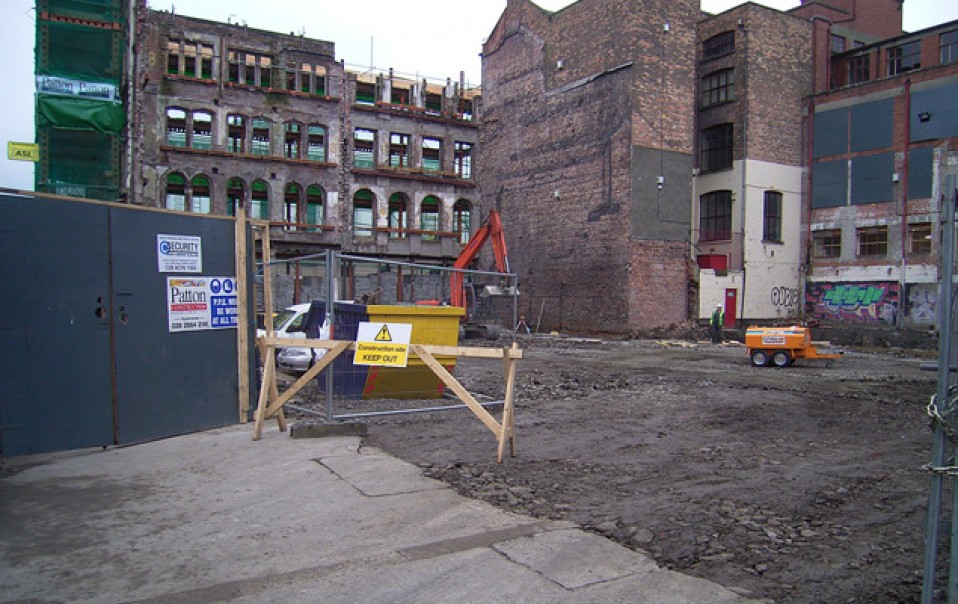
Opening hours
Tues-Sat, 1-5pm
Street Archaeology 2
Gahan and Long Ltd
Ends 22 September 2007
This urban archaeology project focuses on the excavation site at the Four Corners, Cathedral Quarter, Belfast, carried out by the archeological services of Gahan and Long Ltd. The site at one of the oldest parts of the city centre is now the building site for a new hotel complex. Findings of these excavations, site drawings plans and histories are on display. Archaeology and contemporary art practice have in many respects similar approaches in reconstructing and reconstructing hidden realities and investigating the social and built environment. What they also have in common is the ‘tool’ of drawing. To show an archaeological project in an art space shifts the focus from a scientific to a creative approach and widens the spectrum from the past to the present day regeneration.
For more details about street archaeology I, 2005 see
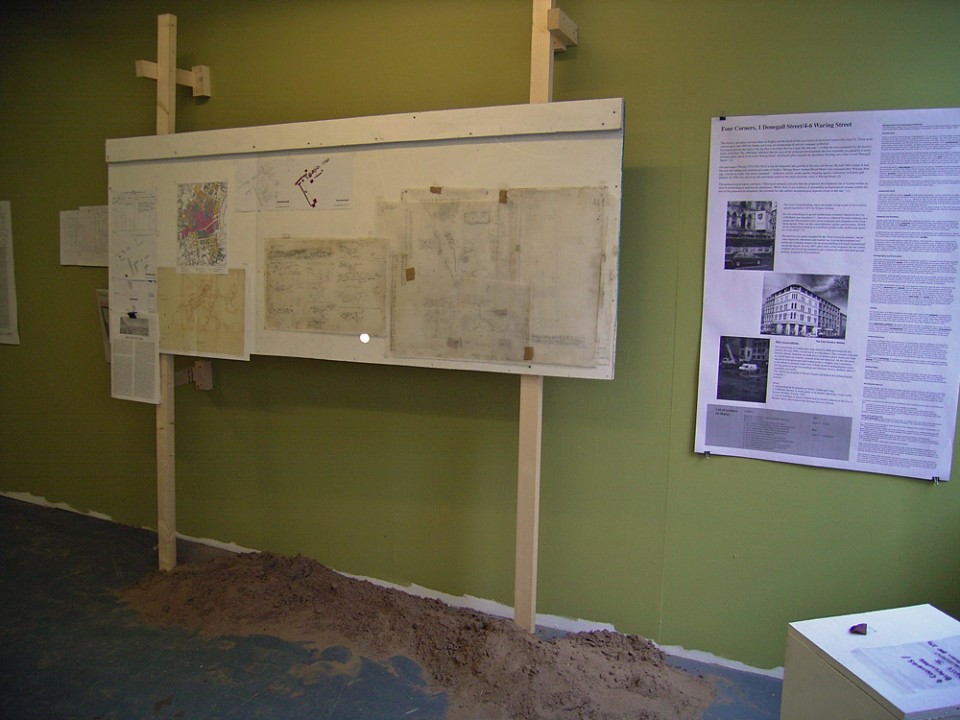
Installation view
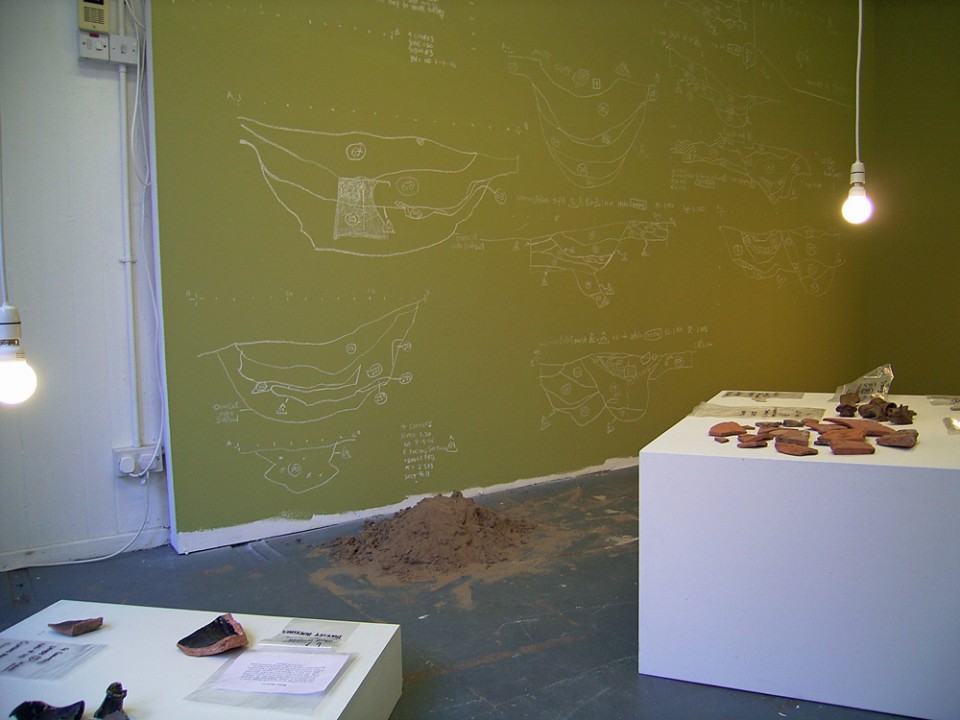
Installation view
Four Corners
1 Donegall Street/4-6 Waring Street
The objects and site drawings on display are all from the excavation site at the Four Corners. The excavations, which took place over five months at the end of 2006, were carried out by Gahan and Long, Belfast. In a report prior to the start of the dig, the archaeological company concluded that the site was “…within the area contained by the historic limits of Belfast. The 1660 map indicates that the area of the proposed development site was originally occupied by a series of house plots, which front along Waring Street. Additional plots can also be identified, fronting onto what is now Donegall Street.”
1] On later maps –some are shown here- a fast development and growth of the area can be seen. By mid 19th century the area had become the trading and commercial centre of Belfast, (Waring Street- former Broad Street- was renamed after William Waring, a tanner). The street contained “…milliners, tailors, estate agents, shipping agents, stationers, solicitors and printers. In 1840, five out of six fish merchants listed in the street directory were in Waring Street.”
2] The archaeological report concludes: “Historical research indicates that the proposed development site is located within an area of archaeological and historic importance. While there is no evidence of upstanding archaeological remains within the area of the proposed development, the potential for sub-surface archaeological deposits exists at the site.”
3] The Four Corner Building, where the façade is kept as part of the re-development, was built in 1871 by Thomas Jackson. In a list of buildings of special architectural or historic interest in the City of Belfast it was described as a “…four-storey rendered Victorian building on a corner site. The windows have raised surrounds and colonettes with Corinthian capitals. There are also raised pilasters, quoins and keystones. Whilst not an outstanding building, it contributes greatly to the rhythm and character of the street.”
4] The building was partly occupied by the ‘Four Corner Restaurant’, but became neglected, abandoned and boarded up. A prime development site within the Cathedral Quarter, the decaying building was finally demolished-except the façade- in early 2007 and is now a redevelopment site for a hotel complex and mixed use residential and commercial units, designed by box architects (see ground floor plan). Like the close-by Victoria redevelopment, the new complex will have underground parking, which- in the context of archaeology- means an irreversible removal of historically significant soil layers.
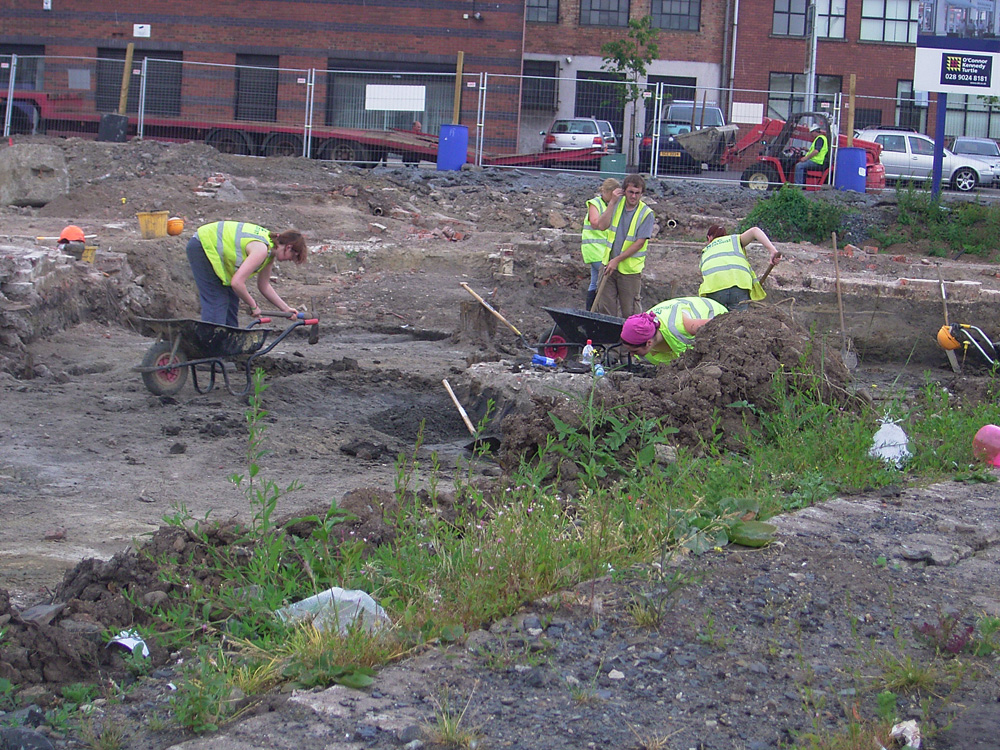
Excavation site, Four Corners
Site Excavations
Thousands of small pieces of pottery, glass, bones and leather
The excavations were carried out in several phases after the existing building was gutted. As soon as one plot was completed, preparation work started for the new building. The company collected historic objects, thousands of small pieces of pottery, glass, bones and leather, which had to be notated, bagged and later cleaned, dried and prepared for analysis. Samples of soil from different layers were collected, which will be analyzed at Queen's University, Belfast, for seeds and other traces.All the site drawings have to be processed and computerized, a lengthy, time consuming process which is currently under way. A final, detailed archaeological report will be produced and archived at the Environment and Heritage Service, Belfast, where it is publicly accessible.
The objects are property of the developers and kept in the archaeological company’s archive.
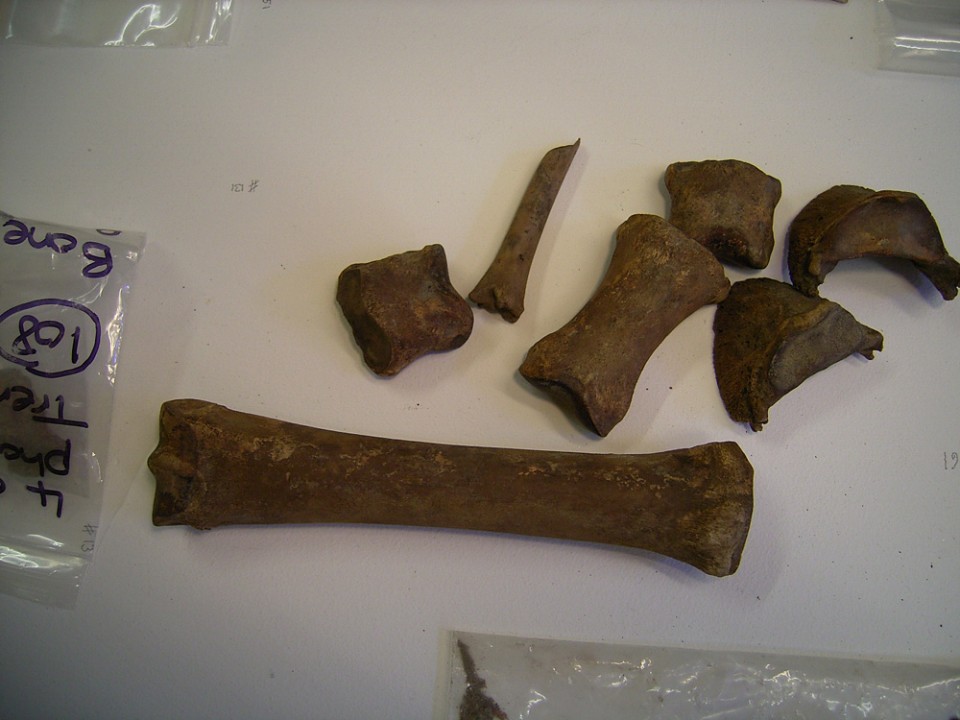
Excavated bones
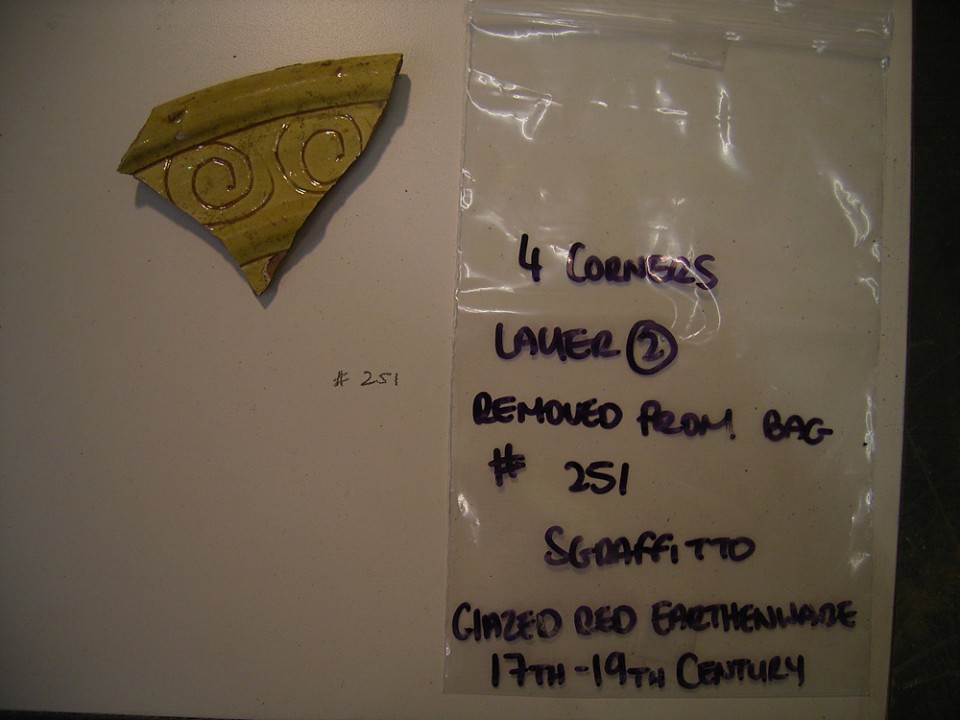
Excavated pottery

